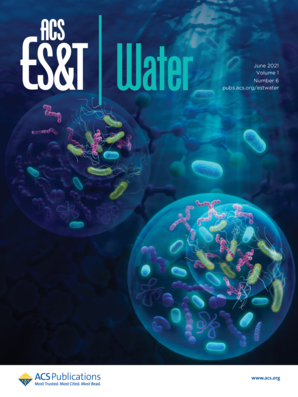Urban Stormwater Runoff: A Major Pathway for Anthropogenic Particles, Black Rubbery Fragments, and Other Types of Microplastics to Urban Receiving Waters
2021. Urban Stormwater Runoff: A Major Pathway for Anthropogenic Particles, Black Rubbery Fragments, and Other Types of Microplastics to Urban Receiving Waters. Environmental Science and Technology Water . SFEI Contribution No. 1040.
 Stormwater runoff has been suggested to be a significant pathway of microplastics to aquatic habitats; yet, few studies have quantified microplastics in stormwater. Here, we quantify and characterize urban stormwater runoff from 12 watersheds surrounding San Francisco Bay for anthropogenic debris, including microplastics. Depth-integrated samples were collected during wet weather events. All stormwater runoff contained anthropogenic microparticles, including microplastics, with concentrations ranging from 1.1 to 24.6 particles/L. These concentrations are much higher than those in wastewater treatment plant effluent, suggesting urban stormwater runoff is a major source of anthropogenic debris, including microplastics, to aquatic habitats. Fibers and black rubbery fragments (potentially tire and road wear particles) were the most frequently occurring morphologies, comprising ∼85% of all particles across all samples. This suggests that mitigation strategies for stormwater should be prioritized. As a case study, we sampled stormwater from the inlet and outlet of a rain garden during three storm events to measure how effectively rain gardens capture microplastics and prevent it from contaminating aquatic ecosystems. We found that the rain garden successfully removed 96% of anthropogenic debris on average and 100% of black rubbery fragments, suggesting rain gardens should be further explored as a mitigation strategy for microplastic pollution.
Stormwater runoff has been suggested to be a significant pathway of microplastics to aquatic habitats; yet, few studies have quantified microplastics in stormwater. Here, we quantify and characterize urban stormwater runoff from 12 watersheds surrounding San Francisco Bay for anthropogenic debris, including microplastics. Depth-integrated samples were collected during wet weather events. All stormwater runoff contained anthropogenic microparticles, including microplastics, with concentrations ranging from 1.1 to 24.6 particles/L. These concentrations are much higher than those in wastewater treatment plant effluent, suggesting urban stormwater runoff is a major source of anthropogenic debris, including microplastics, to aquatic habitats. Fibers and black rubbery fragments (potentially tire and road wear particles) were the most frequently occurring morphologies, comprising ∼85% of all particles across all samples. This suggests that mitigation strategies for stormwater should be prioritized. As a case study, we sampled stormwater from the inlet and outlet of a rain garden during three storm events to measure how effectively rain gardens capture microplastics and prevent it from contaminating aquatic ecosystems. We found that the rain garden successfully removed 96% of anthropogenic debris on average and 100% of black rubbery fragments, suggesting rain gardens should be further explored as a mitigation strategy for microplastic pollution.
